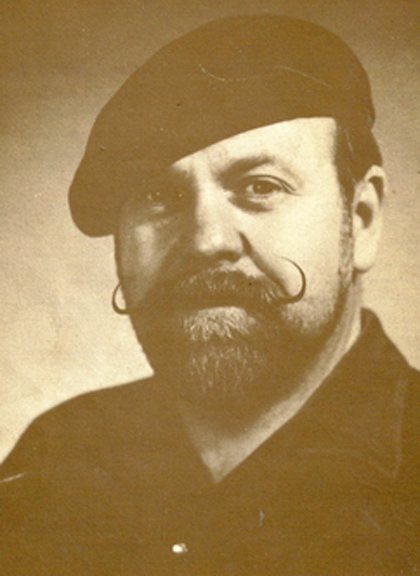Drafting A Revolution
An Inside Look at the Pioneering Days of American Craft Beer
Taking Notice
Maytag knew of these trends as he took control of what one contemporary described as “a crude and primitive, old brewery.” Anchor was in sad shape. Since its 1896 founding, it had gone through several owners of varying levels of enthusiasm and skill, and its run-down equipment in the cramped Eighth Street location was overseen by one employee who didn’t have much to do.
Anchor’s signature steam brand was, Maytag realized, “kept alive more by the enthusiasm for the idea than for the beer.” Anchor Steam’s quality was iffy then, and the brand was more the ward of local retailers like Kuh at the Old Spaghetti Factory, who adored the idea of a locally made beer.
Maytag did, too. He and his skeleton crew, including early hires like Gordon MacDermott and Mark Carpenter, would toil to refine Anchor’s ingredients and brewing—Maytag had set up a lab at the brewery, complete with microscope and tomes on chemistry and microbiology—and, by 1973, he could say that Anchor was producing “consistently marvelous” beer.
Few beyond the San Francisco Bay Area noticed, however. Anchor only began bottling in 1971 (10,670 cases that first year from a line that could bottle 74 beers a minute), its approximately 1,000 barrels annually being previously all-draft; and it would not distribute beyond California until 1975.
Still, Anchor had crucial fans. Fred Eckhardt was one.
Eckhardt’s earliest memory of beer was from his father’s Prohibition-era homebrew 40 years before: one can hops, 10 gallons of water, several pounds of sugar, translating into roughly 10 gallons of very strong—and very not good—beer. It was not until, as a Marine flight radio operator stationed in Japan during the Korean War, that Eckhardt got the taste of that Prohibition homebrew out of his mouth by drinking generous helpings of the Danish beer Tuborg.

Before he became a noted beer writer, Fred Eckhardt was a Marine flight radio operator stationed in Japan during the Korean War.
Eckhardt took this sense of what beer could be to Portland, OR, where he settled in 1964 to work as a photographer. Eckhardt’s new hometown had 316 barber shops, 76 photography studios, 30 movie theaters and 24 funeral homes for its 372,000 residents. But, like other American cities by then, it had barely one brewery—in Portland’s case, Blitz-Weinhard, a regional founded by German immigrant Henry Weinhard 90 years before that would fall into Pabst’s hands in 1979.
To a budding beer snob like Eckhardt, with his trademark handlebar mustache, something had to be done. He began teaching homebrewing classes at Wine Art, a supply shop near I-84 that served as a meeting place and clearinghouse for homebrewers in an era when it was still illegal.
To show his students just how small-batch brewing was done commercially, he traveled to San Francisco, to what was the only craft brewery in the nation. Maytag and Eckhardt struck up a rapport, with the brewer sharing his time and expertise generously and his visitor shooting photos of the brewing process to share with his students back in Portland.
Eckhardt also took time to knuckle-rap the influential San Francisco Chronicle columnist Charles McCabe, who had complained about the quality of domestic beers. Eckhardt wrote in to set him straight on the tradition in his own backyard, thereby winning Anchor a powerful ally. Here was McCabe rhapsodizing on April 20, 1970: “Yet Steam had as much to do with the building of San Francisco and Northern California as the Christian values, good stout Levi’s, shovels and the saving presence of whores.”
It was also in 1970 that Eckhardt, aided by a new typewriter and a gallon of rose wine, hammered out his own eminently quotable words on craft beer. Prodded by Wine Art owner Jack McCallum, Eckhardt wrote A Treatise on Lager Beers (the “Treatise” was McCallum’s idea, to lend gravitas to what was thought a quotidian subject).
Even 40-plus years later, the slim book reads less like a homebrewing guide—though it was meticulously that—and more like a palatal call to arms: “There are almost no quality beers made in this country, so if you want good, old-country style beer you must make it yourself.”
Tom Acitelli
This story was adapted from the new book, The Audacity of Hops: The History of America’s Craft Beer Revolution by Tom Acitelli. He can be reached via email and on Twitter.

EXCELLENT article! Thanks so much.
Loved the 5 page start to the book. Where can I get it. Have been home brewing off & on for several years and have found this very informative on it’s history.
Thank you.
great article!